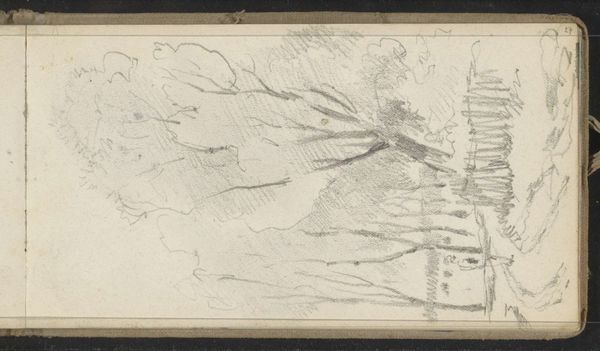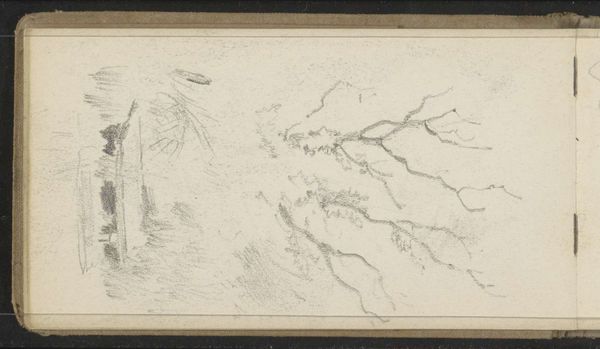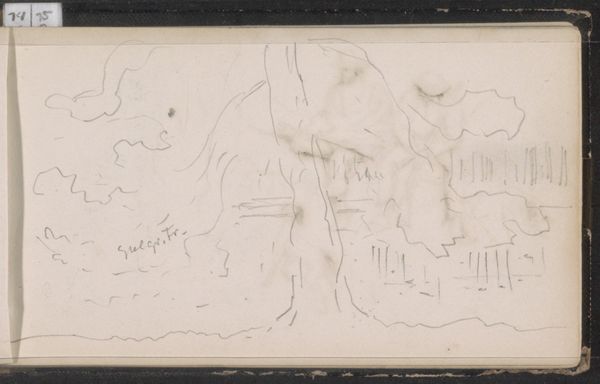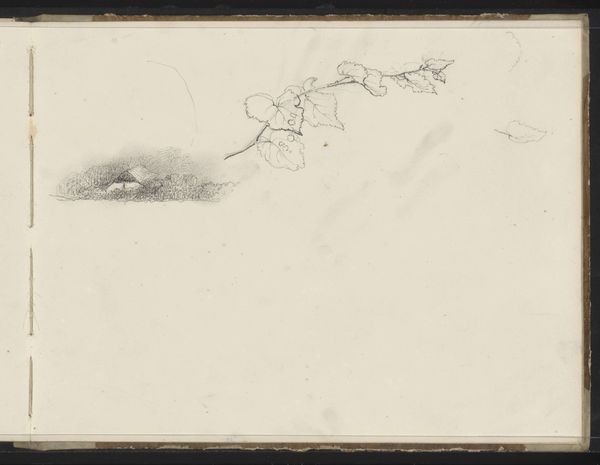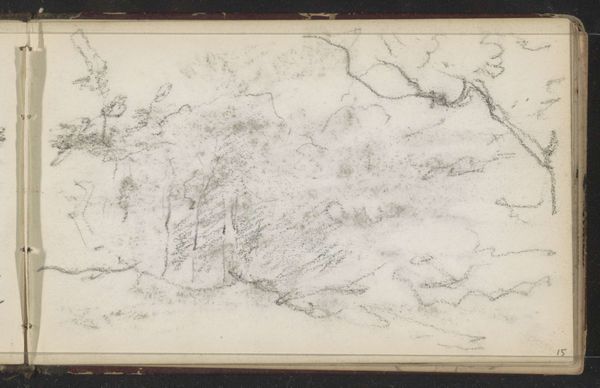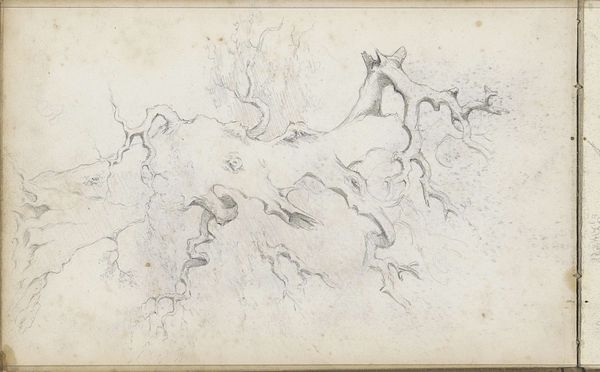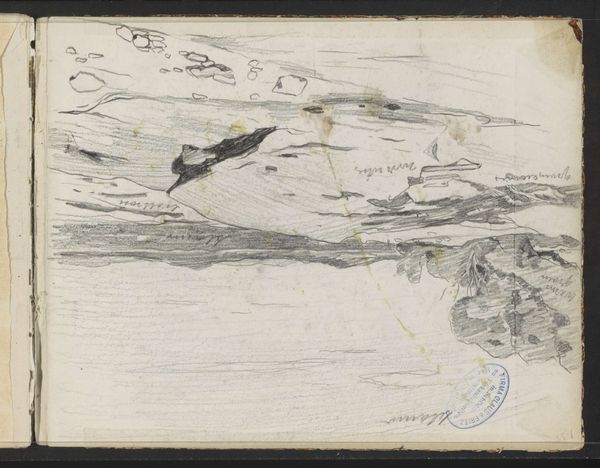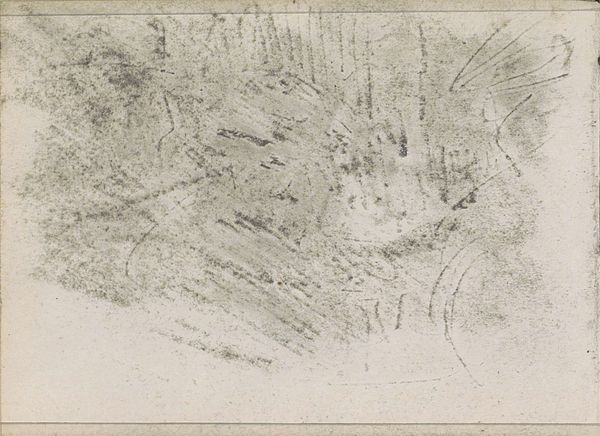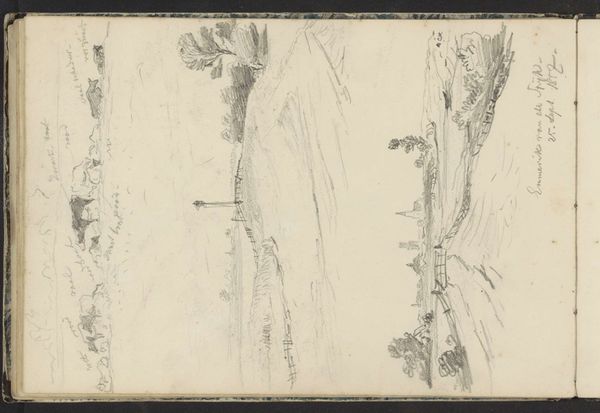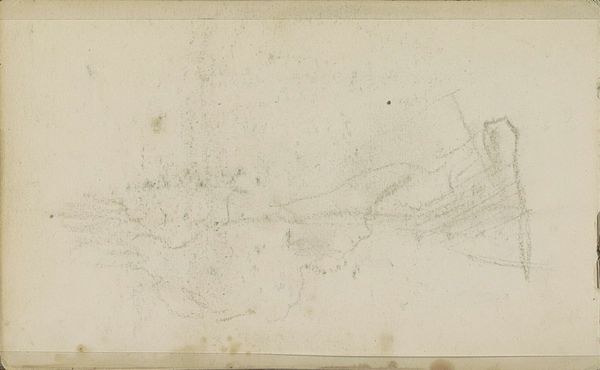
Dimensions: height 101 mm, width 157 mm
Copyright: Rijks Museum: Open Domain
Curator: It's interesting, isn't it? This quick sketch by Willem Cornelis Rip, titled "Landschap met een knotwilg"—"Landscape with a pollard willow" created around 1891-1892. A pencil drawing; very raw. Editor: My first impression is bleak, stark even. It gives the sense of a harsh, unforgiving landscape. Is it the texture of the paper or the deliberate strokes that create that effect? Curator: A bit of both, I think. It’s definitely an impressionist study, where the aim isn’t necessarily precise depiction but conveying a feeling, or the impression of a specific moment in nature. Rip was clearly working on location here. Editor: Right, situating this landscape in the context of land use – the pollarded willow. Those trees were meticulously managed, their branches harvested. It speaks to a relationship between humans and the land, doesn't it? Almost collaborative. Curator: Precisely. You can see the artist focuses his attention on this relationship, the visible evidence of manual labor on this natural scene. The choice of pencil itself also seems key – a readily available, inexpensive medium indicating it was made on site, likely intended as preliminary work for a larger painting. Editor: Absolutely. I’m drawn to thinking about the unseen labor represented here. Rip belonged to a community that often excluded those doing actual work: agricultural labor, the cutting of the willow branches. There's tension there, between observation and direct participation. Curator: True. However, it’s clear Rip finds something valuable in documenting this scene. What materials are easily to hand in the Netherlands around the end of the 19th century? This would be it, I reckon. Editor: Still, by sketching this manipulated landscape, Rip offers, unintentionally maybe, commentary on humanity's constant negotiation with the natural world. Even the “natural” here has been manufactured. Curator: Fascinating viewpoint. The means of making art always holds clues if we examine closely enough. Editor: Exactly, seeing this piece as not just an aesthetic representation but as a document of the social and environmental forces shaping the landscape. Curator: A landscape of human engagement! Thank you, it's so refreshing to contemplate beyond what initially meets the eye. Editor: Indeed. Art always whispers, and it’s our job to listen.
Comments
No comments
Be the first to comment and join the conversation on the ultimate creative platform.
